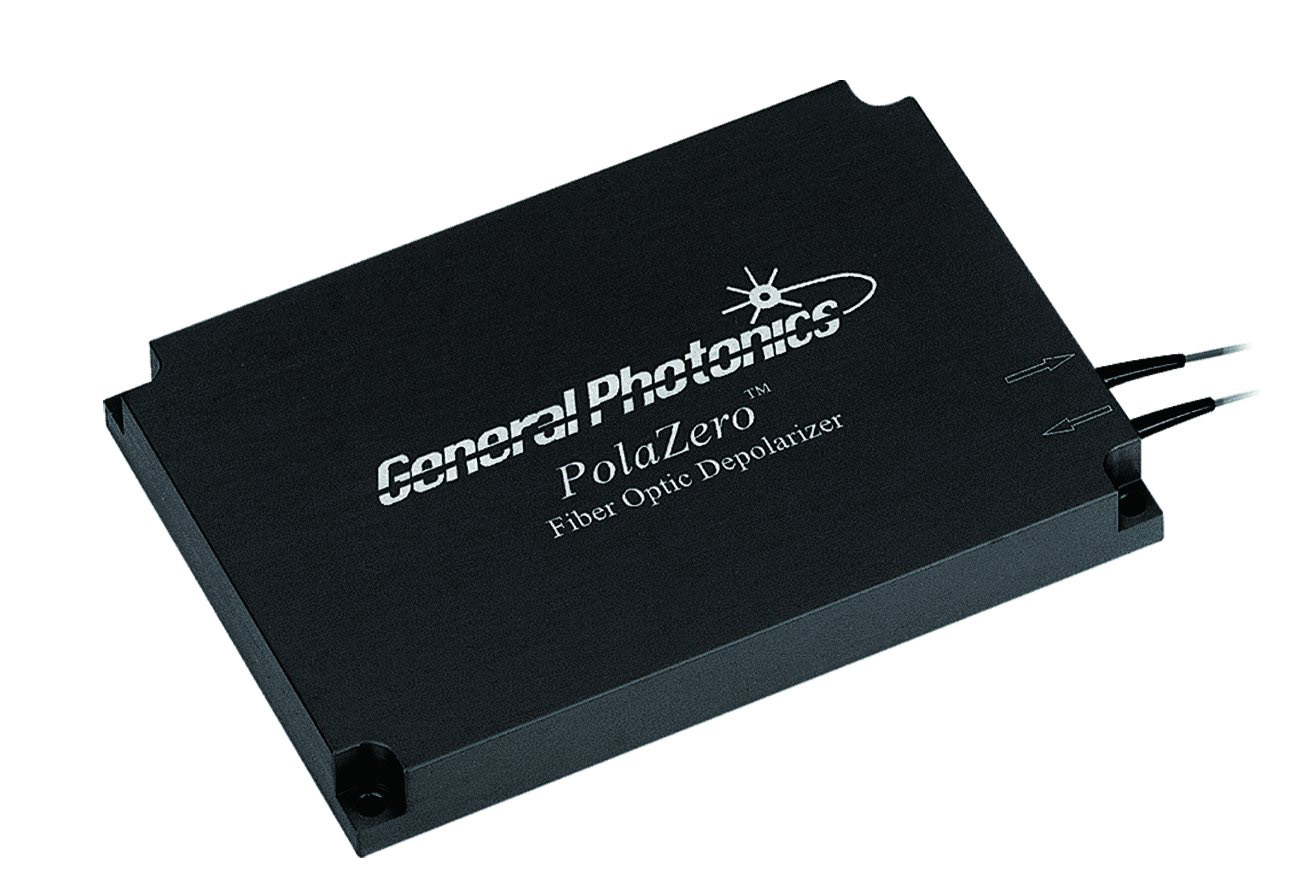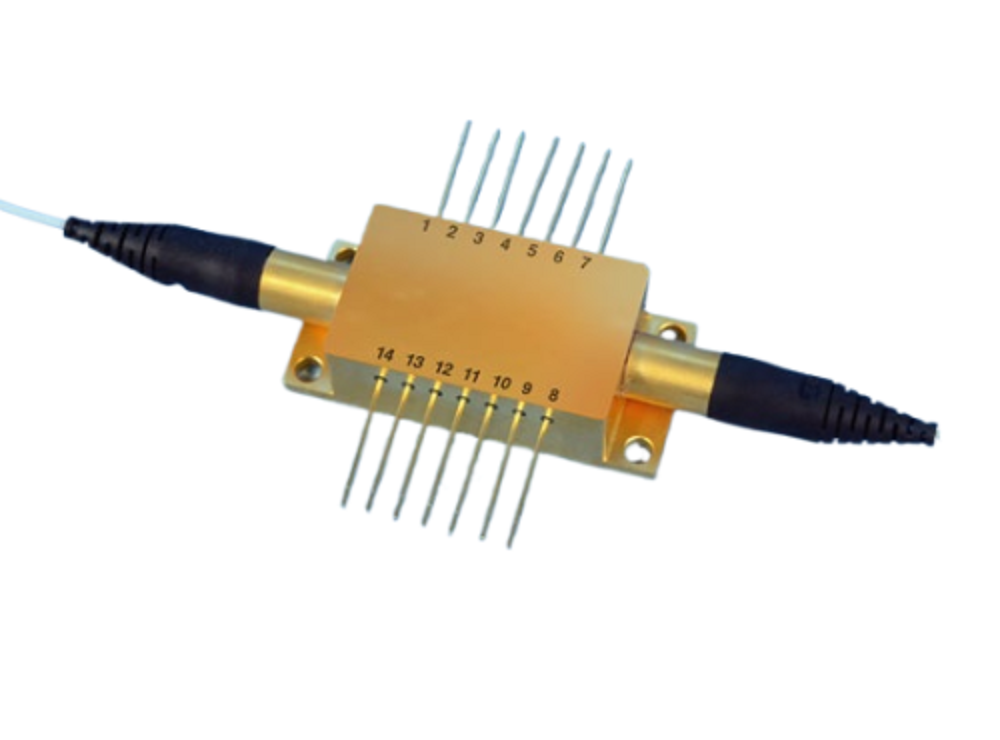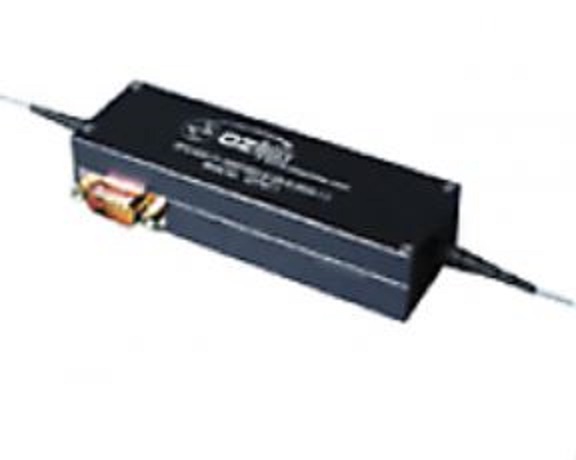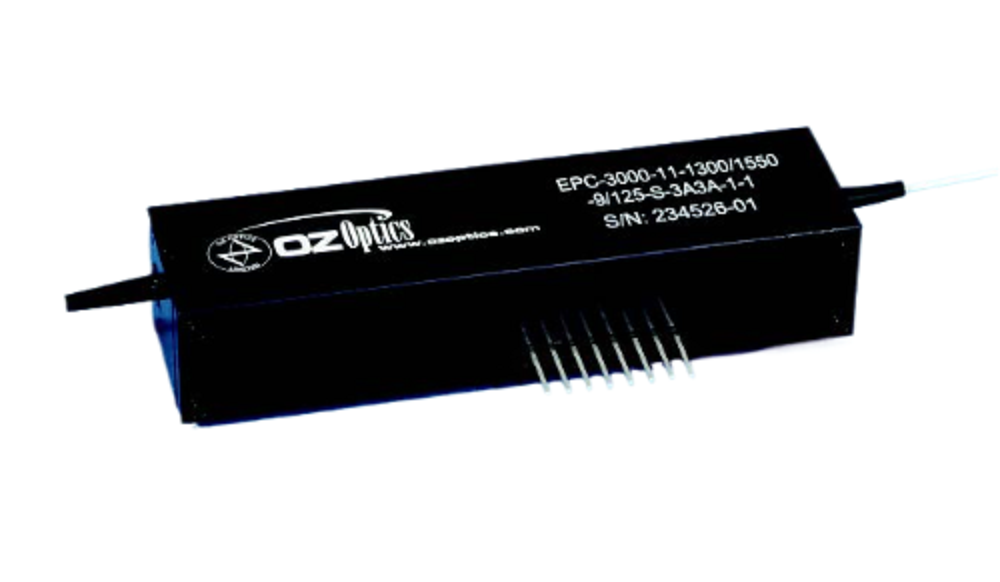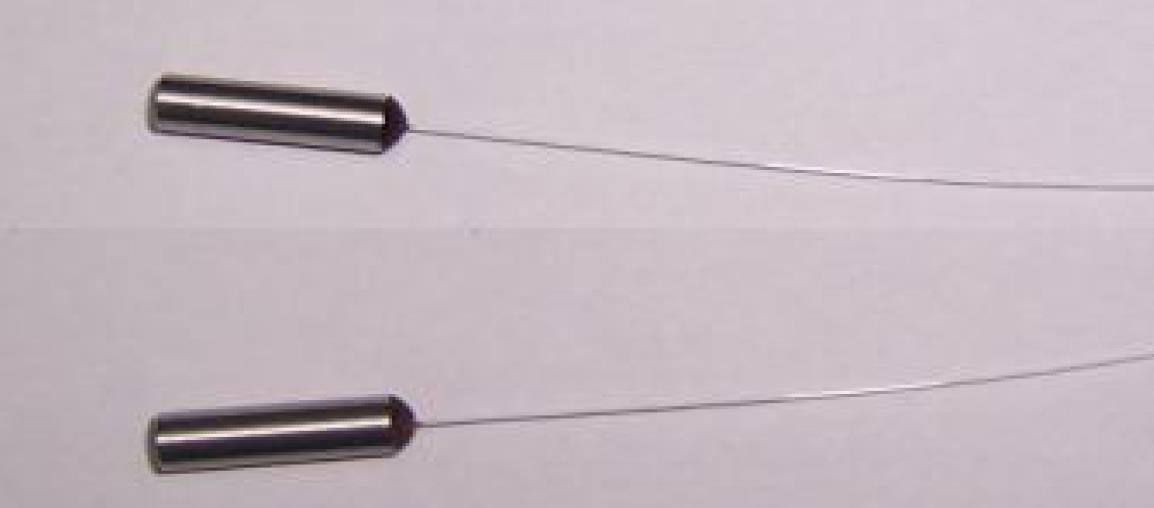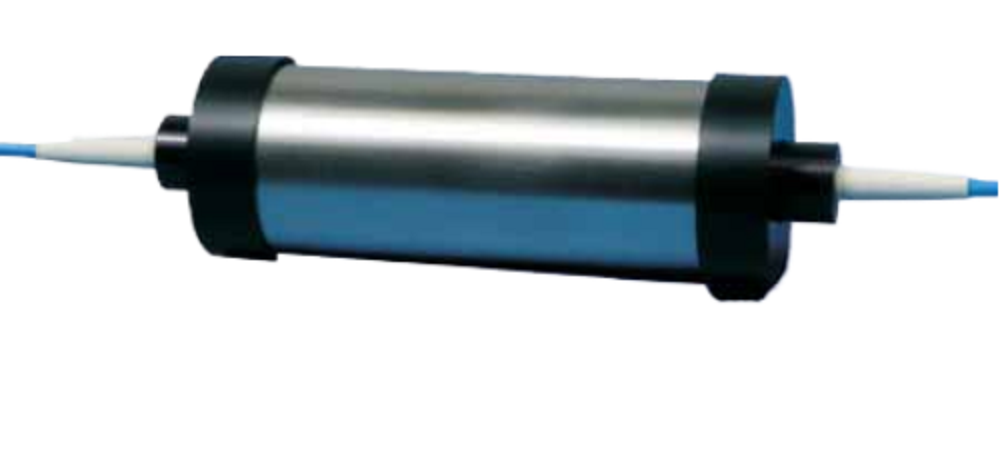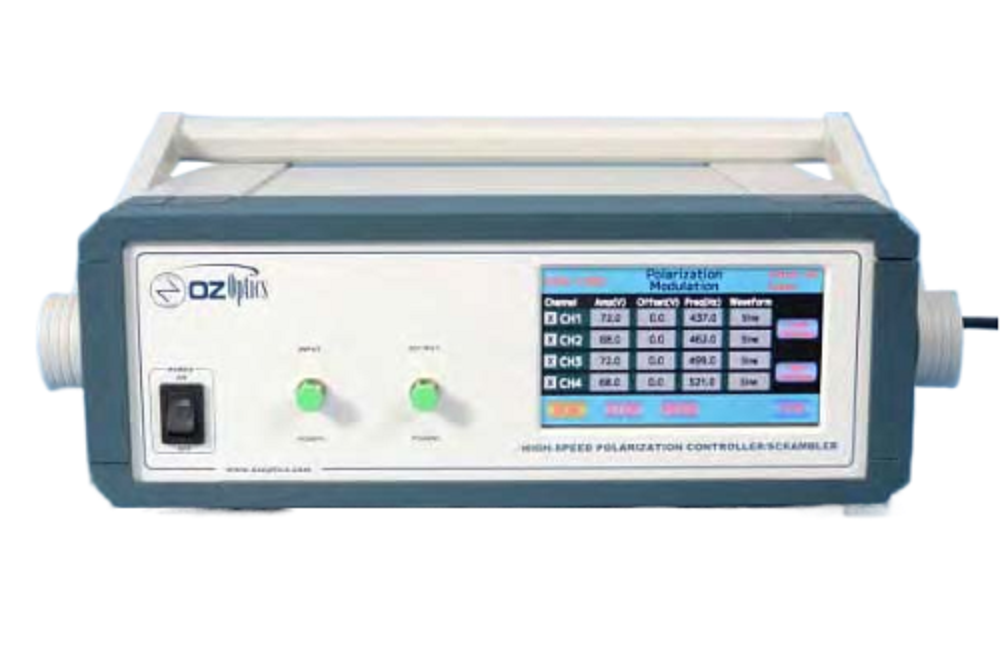Product information "MPC-201 Polarization Controller"
980-1620 nm; Multiple Polarization Control Modes; IL <0.6 dB; PDL <0.1 dB; PMD <0.2 ps; AL <0.1 dB; RL >50 dB
Controlling the state of polarization (SOP) of an optical signal has never been easier – General Photonics’ MPC-201 multifunction polarization controller has four operational modes for complete polarization control: variable rate polarization scrambling, manual polarization adjustment, polarization modulation, and externally triggered random SOP generation.
Four different polarization scrambling methods enable the SOP to a) trace out a spiral pattern about a static or rotating axis with a nearly uniform SOP variation rate for system stress tests (Tornado scrambling); b) generate a continuous trace with a Rayleigh distribution of SOP variation rate, for emulation of the SOP variation in a fiber link (Rayleigh scrambling); c) generate a continuous trace with uniform sphere coverage for PDL measurement (Triangle scrambling); or d) evenly cover the Poincaré sphere with discrete, random points at a uniform rate (Discrete scrambling).
In the SOP modulation mode, each polarization control axis can be selectively controlled with a sine, square, or triangle wave of user defined frequency and amplitude. Each polarization control axis can also be controlled manually, by setting the input voltage either from the front panel controls or through a remote control interface. In externally triggered scrambling mode, discrete, random SOPs are generated in response to a trigger input, a feature desirable for recirculating loop applications or other applications requiring synchronization with other devices.
Finally, the MPC-201 can emulate the Agilent 11896A polarization scrambler function, allowing it to act as a plug-in replacement for this popular but discontinued device, while offering many more advanced features. The MPC-201 polarization controller puts the user in control.
Key Features:
- Multiple Polarization Control Modes
- Tornado Scrambling (Quasi-uniform Rate Distribution): 0.00 to 2,000 Revolutions/s
- Real Fiber SOP (State of Polarization) Variation Emulation (Rayleigh Rate Distribution): 0.00 to 2,000 rad/s
- Discrete Random States SOP Scrambling: 0.00 to 20,000 Points/s
- Triangle Polarization Scrambling: 0.00 to 2,000 x 2π rad/s
- Agilent 11896A Scrambling Emulation: Speed Settings 1 to 8, Matched to 11896A Settings
- SOP Modulation
- Operating Wavelength Range: 1260 to 1620 nm, 980 to 1310 nm
- Manual Polarization Control: 4 Channels, 0 to 4π Each Channel
- Low Insertion Loss (IL): <0.5 dB With Connectors
- Low Polarization Dependent Loss (PDL): <0.05 dB With Connectors
- Low Polarization Mode Dispersion (PMD): <0.1 ps With Connectors
- Low Activation Loss (AL): <0.05 dB With Connectors
- Return Loss: >50 dB With Connectors
- Optical Power Handling: 1,000 mW
- Bright OLED Display
Applications: Recirculating Loop Studies; Automated Testing; Real Fiber Emulation; SOP Variation Emulation; PMD Emulation; Polarization Scrambling; System Polarization Studies; PDL/DOP Measurement





